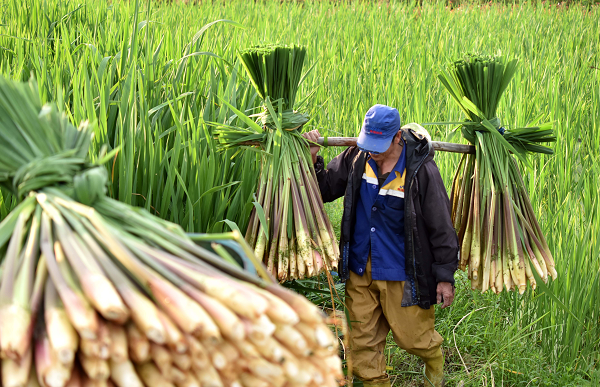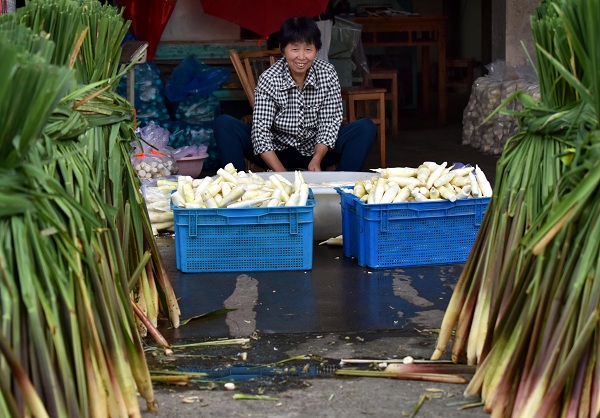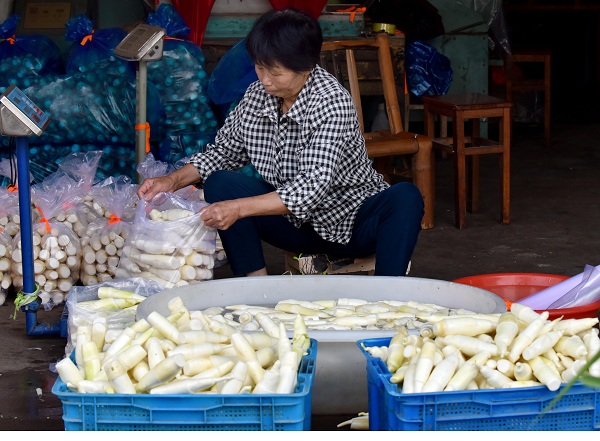
A farmer harvests mature "cold water" wild rice stems in Jinhua on June 7. [Photo/IC]
Shanhoujin village, Langya town, Wucheng district, Jinhua is a well-known industrial base for "cold water" wild rice stems.
Relying on natural and clean cold water resources and innovative cold water irrigation cultivation technology, "cold water" wild rice stems are harvested more than two months earlier than normal ones.
"Cold water" wild rice stems generally sell well. Their price can reach 7 yuan ($1.04) per kilogram even for on-site wholesale purchases, about 30 percent higher than that of surrounding plantations.
Researchers at the academy of agricultural sciences in Jinhua have developed seven new kinds of wild rice stems with high productivity and quality to further develop the agricultural industry and promote rural vitalization.
In recent years, the new varieties of wild rice stems bred by the academy have been promoted to Zhejiang province with an annual growing area of nearly 13,333.33 hectares and more than 200 million yuan in annual economic benefits.
Wild rice stems, also known as water bamboo, grow in shallow water and have fully elongated leaves measuring from 30 to 60 centimeters in length. They can grow from 1.2 to 2.4 meters in height.
As a traditional Chinese recipe for maintain health, this sweet-tasting food can help nourish the liver, spleen and lungs, relieve heat and thirst, promote urination and help induce bowel movements.

A farmer peels wild rice stems in Jinhua on June 7. [Photo/IC]

A farmer packs cleaned wild rice stems to sell. [Photo/IC]

